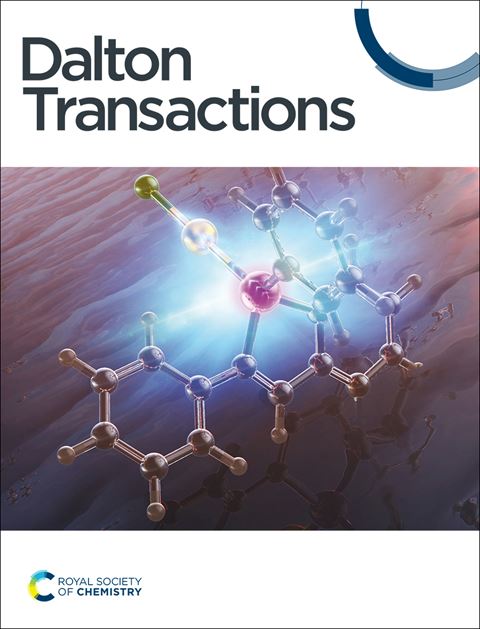Rationally Tailored Passivator with Multisite Surface-anchors for Suppressing Ion Migration toward Air-Stable Perovskite Solar Cells
IF 3.5
3区 化学
Q2 CHEMISTRY, INORGANIC & NUCLEAR
引用次数: 0
Abstract
Trap states in perovskite films fabricated from solution-method can capture photo-generated carriers, expedite ion migration, and contribute to decomposition of perovskite layer, thereby emerging as a major threat to the commercialization of perovskite solar cells (PSCs). To address these issues, passivation of surface traps on perovskite films via molecules with functional groups has been proved to be one of the most effective tactics for obtaining high-performance PSCs. Herein, potassium nonafluoro-1-butanesulfonate (KNFBS) molecules with multiple chemical bonds including multisite F atoms, sulfonic acid group and K ions were introduced as surface-anchoring passivators to improve the film quality as well as passivate trap states. Based on the in situ conductive atomic force microscopy (C-AFM) and Kelvin probe force microscopy (KPFM) results, it was found that undercoordinated Pb and I vacancy defects on the surface and grain boundaries (GBs) of perovskite films can be synergistically curtailed via multiple chemical interaction including Lewis acid-base, hydrogen and ionic bonds, respectively. Moreover, the influence of the varied ligands on defect and the halide ion migration in perovskites as well as the mechanism behind it have been extensively explored. Therefore, the KNFBS-treated perovskite films with a more homogeneous surface potential distribution, significantly reduced point, vacancy defect and dangling bond density, and facilitated charge transfer, resulted in an optimized power conversion efficiency (PCE) of 20.88% and enhanced air stability for the PSCs fabricated and stored in fully open-air condition. The work has not only elucidated the fundamental mechanisms of ion migration and multisite passivation at surface and GBs of perovskites, but also probes into the ligand design strategies for further improving the performance of perovskite photovoltaics.合理定制的多位点表面锚定钝化剂抑制离子向空气稳定钙钛矿太阳能电池的迁移
溶液法制备的钙钛矿薄膜中的陷阱态可以捕获光生成的载流子,加速离子迁移,并有助于钙钛矿层的分解,从而成为钙钛矿太阳能电池(PSCs)商业化的主要威胁。为了解决这些问题,通过具有官能团的分子钝化钙钛矿膜表面陷阱已被证明是获得高性能psc的最有效策略之一。本研究引入具有多个化学键的非氟-1-丁磺酸钾(KNFBS)分子,包括多位点F原子、磺酸基和K离子,作为表面锚定钝化剂,以改善膜质量和钝化陷阱状态。基于原位导电原子力显微镜(C-AFM)和开尔文探针力显微镜(KPFM)的结果,发现钙钛矿薄膜表面和晶界(GBs)上的欠配位Pb和I空位缺陷可以通过Lewis酸碱键、氢键和离子键等多种化学相互作用协同减少。此外,各种配体对钙钛矿缺陷和卤化物离子迁移的影响及其背后的机制也得到了广泛的探讨。因此,经knfbs处理的钙钛矿薄膜具有更均匀的表面电位分布,显著减少了点、空位缺陷和悬垂键密度,促进了电荷转移,使得制备和储存在全露天条件下的PSCs的功率转换效率(PCE)达到20.88%,并增强了空气稳定性。本研究不仅阐明了钙钛矿表面和GBs离子迁移和多位点钝化的基本机理,而且探讨了进一步提高钙钛矿光伏性能的配体设计策略。
本文章由计算机程序翻译,如有差异,请以英文原文为准。
求助全文
约1分钟内获得全文
求助全文
来源期刊

Dalton Transactions
化学-无机化学与核化学
CiteScore
6.60
自引率
7.50%
发文量
1832
审稿时长
1.5 months
期刊介绍:
Dalton Transactions is a journal for all areas of inorganic chemistry, which encompasses the organometallic, bioinorganic and materials chemistry of the elements, with applications including synthesis, catalysis, energy conversion/storage, electrical devices and medicine. Dalton Transactions welcomes high-quality, original submissions in all of these areas and more, where the advancement of knowledge in inorganic chemistry is significant.
 求助内容:
求助内容: 应助结果提醒方式:
应助结果提醒方式:


